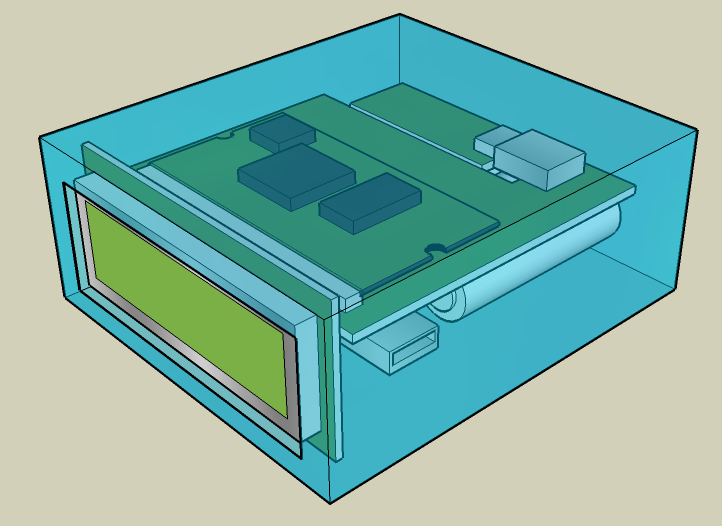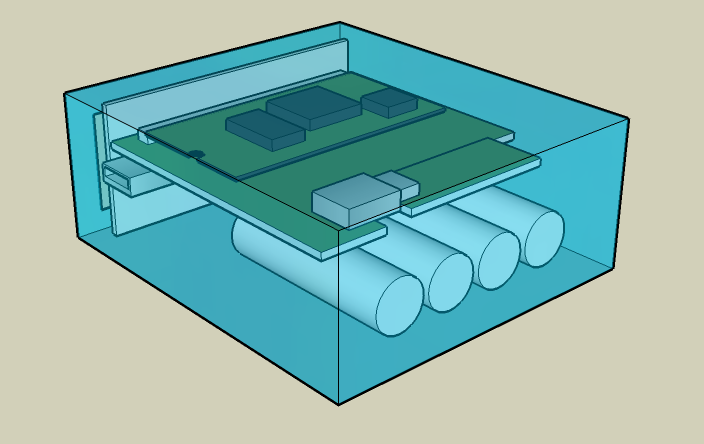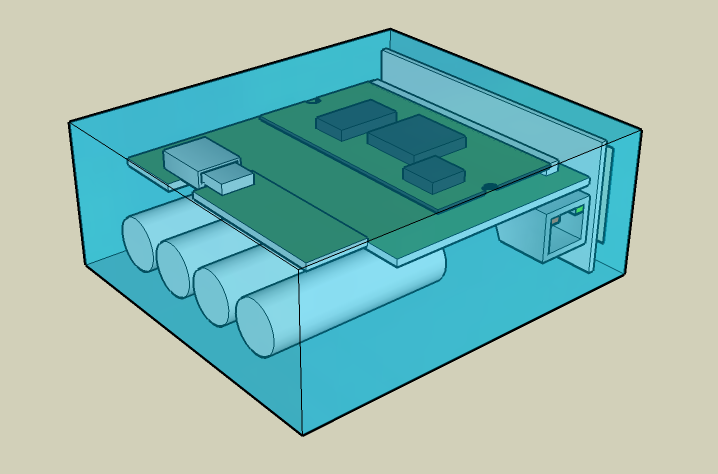Difference between revisions of "Wearable computer project"
m (→see also) |
(various types of conductive thread) |
||
| (2 intermediate revisions by 2 users not shown) | |||
| Line 20: | Line 20: | ||
The peculiar thing about the internal USB socket is that I can plug in any host-powered wireless module that I want. It certainly is cheaper than trying to fit a wireless module onto the custom board. At least in the low volumes that I'm thinking of. You could also fit it with different types of modules based on the requirements, for example a USB to Wireless chip for wireless applications, or a Bluetooth dongle for a link with a handset. Why spend more money if you can just take a DLink module, strip its shell and place it in this device for $20? | The peculiar thing about the internal USB socket is that I can plug in any host-powered wireless module that I want. It certainly is cheaper than trying to fit a wireless module onto the custom board. At least in the low volumes that I'm thinking of. You could also fit it with different types of modules based on the requirements, for example a USB to Wireless chip for wireless applications, or a Bluetooth dongle for a link with a handset. Why spend more money if you can just take a DLink module, strip its shell and place it in this device for $20? | ||
| + | |||
| + | == conductive thread == | ||
| + | |||
| + | Some people are experimenting with "wearable electronics" sewn into clothing | ||
| + | ([http://web.media.mit.edu/~leah/grad_work/diy/diy_e_sewing_old.html "make your own electronic sewing kit"]). | ||
| + | Some reviews of various types of conductive thread are available ([http://electronics.stackexchange.com/questions/42/is-there-a-way-to-make-your-own-conductive-thread-for-wearable-electronics],[http://wearable.mlog.taik.fi/links/]). | ||
| + | Some approaches available today are: | ||
| + | thin, 30AWG wire can be sewn into clothing | ||
| + | [http://rayshobby.net/blog/?p=1128]. | ||
| + | tinsel (?) [http://www.sparkfun.com/products/10172]. | ||
| + | conductive thread spun entirely from stainless steel fiber [http://www.sparkfun.com/products/10867][http://www.creatroninc.com/index.php/wearable-electronics/lilyp-010867.html]. | ||
| + | silver-plated thread on a nylon core [http://www.sparkfun.com/products/8544]. | ||
| + | conductive paint [http://www.sparkfun.com/products/10994]. | ||
| + | silver-plated nylon fabric [http://www.sparkfun.com/products/10055]. | ||
| + | |||
| + | Some people are currently experimenting with other kinds of conductive threads: | ||
| + | "electronic cotton" | ||
| + | (ordinary cotton threads coated with gold nanoparticles and the transparent conductor PEDOT), | ||
| + | [http://spectrum.ieee.org/semiconductors/materials/electronic-cotton], | ||
| + | [http://www.kurzweilai.net/electronic-cotton], | ||
| + | [http://www.qmed.com/mpmn/medtechpulse/cotton-transistors-lead-way-wearable-electronic-devices], | ||
| + | which can be coated with semiconductor material to make transistors. | ||
| + | Other researchers are trying to develop fabrics that can store energy and possibly even generate energy [http://www.talk2myshirt.com/blog/archives/5657]. | ||
== see also == | == see also == | ||
* [[Projects#motherboards_that_run_Linux | motherboards that run Linux]] | * [[Projects#motherboards_that_run_Linux | motherboards that run Linux]] | ||
| − | * | + | * [http://www.jogglerwiki.com/wiki/Disassembling_the_Joggler JogglerWiki] shows another device with an internal USB socket for the wireless module |
| + | * [http://www.talk2myshirt.com/ talk2myShirt: the wearable electronic connection] | ||
| + | * [http://www.ieee.org/conferences_events/conferences/conferencedetails/index.html?Conf_ID=20335 "International Symposium on Wearable Computers (ISWC)"] | ||
| + | * [http://embs.org/member-communities/technical-committees/wearable-biomedical-sensors-and-systems "Wearable Biomedical Sensors and Systems"] | ||
| + | * [http://spectrum.ieee.org/tech-talk/semiconductors/devices/wearable_device_monitors_sleep "Wearable Device Monitors Sleepiness"] | ||
| + | * [http://spectrum.ieee.org/tech-talk/semiconductors/devices/wanted_a_lightweight_wearable "a million dollar prize for the inventor who can come up with the most efficient Wearable Power System"] | ||
Latest revision as of 09:03, 1 April 2012
Contents
Wearable Computer Project[edit]
Ok, so I can say a bit more about this now. I'm planning to create my own wearable computer device. While I can't discuss what it's supposed to do, I'm hoping I will be able to design a device that can fit more than one application.
Requirements[edit]
- Must run Linux or Windows CE. Although I have more experience with Windows CE, I think for what I intend to dod with it Linux would be more appropriate.
- Must have around 200 MIPS computing power. FPU is not really required. It would probably make life easier but these things cost money.
- Must have at least 8MB of Flash storage space for OS, applications and settings.
- Must have at least 64MB of RAM. At least.
- Must have an 10/100 ethernet port.
- Must have TWO USB 1.1/2.0 Full Speed host ports, of which one is accessible out the enclosure.
- Must be battery powered. I'm looking at either 4xAA or 1 Li-Poly cell.
- Must last a couple of hours.
- Must be belt-wearable.
Current Ideas[edit]
I was thinking of designing a custom baseboard for a system module like the Toradex Colibri, but I have to keep power consumption low so I might opt for a board based on the AT91RM9200 processor. I like the concept of SODIMM 200-pin modules. I threw something conceptual together in Google SketchUp:
The peculiar thing about the internal USB socket is that I can plug in any host-powered wireless module that I want. It certainly is cheaper than trying to fit a wireless module onto the custom board. At least in the low volumes that I'm thinking of. You could also fit it with different types of modules based on the requirements, for example a USB to Wireless chip for wireless applications, or a Bluetooth dongle for a link with a handset. Why spend more money if you can just take a DLink module, strip its shell and place it in this device for $20?
conductive thread[edit]
Some people are experimenting with "wearable electronics" sewn into clothing ("make your own electronic sewing kit"). Some reviews of various types of conductive thread are available ([1],[2]). Some approaches available today are: thin, 30AWG wire can be sewn into clothing [3]. tinsel (?) [4]. conductive thread spun entirely from stainless steel fiber [5][6]. silver-plated thread on a nylon core [7]. conductive paint [8]. silver-plated nylon fabric [9].
Some people are currently experimenting with other kinds of conductive threads: "electronic cotton" (ordinary cotton threads coated with gold nanoparticles and the transparent conductor PEDOT), [10], [11], [12], which can be coated with semiconductor material to make transistors. Other researchers are trying to develop fabrics that can store energy and possibly even generate energy [13].
see also[edit]
- motherboards that run Linux
- JogglerWiki shows another device with an internal USB socket for the wireless module
- talk2myShirt: the wearable electronic connection
- "International Symposium on Wearable Computers (ISWC)"
- "Wearable Biomedical Sensors and Systems"
- "Wearable Device Monitors Sleepiness"
- "a million dollar prize for the inventor who can come up with the most efficient Wearable Power System"


